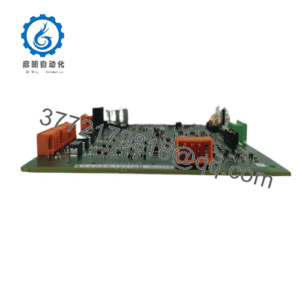Description
In the demanding arena of industrial automation, where thermal processes like heat treating, plastic extrusion, or reactor stabilization require pinpoint temperature regulation to avert material defects, energy waste, or hazardous overtemps, the persistent pain point often boils down to controllers that lag in responsiveness, struggle with nonlinear loads, or lack seamless ties to broader control networks. Picture a furnace line in automotive forging or a drying oven in pharmaceuticals: thermocouples or RTDs feed fluctuating data into PID loops for heater modulation, but conventional units falter under variable setpoints, ambient drifts, or EMI from adjacent drives, spawning overshoots, inconsistent cycles, or integration snags that undermine process control and inflate compliance burdens under standards like IEC 61508 for SIL 2-rated safety loops. Legacy single-loop regulators might handle basics, but they overload in multi-zone setups, lacking the adaptive tuning, modular I/O, or diagnostic depth needed for DCS/PLC architectures where high reliability translates to uninterrupted yields and predictive upkeep without full-line halts.
The WATLOW ANAFAZE CLS216 steps up as a dual-loop advanced temperature controller from Watlow’s ANAFAZE series, engineered to orchestrate precise thermal orchestration in these exact volatile scenarios. This module confronts the pursuit of system stability by processing two independent PID loops for primary and auxiliary control—handling inputs from universal sensors like Type J/K thermocouples or Pt100 RTDs—with adaptive auto-tuning that dynamically recalibrates parameters for loads up to 10 A at 24-48 VAC, all while galvanically isolating channels to fend off noise up to 1 kV. In typical industrial automation contexts—such as zone-specific heating in injection molders or cascade controls in chemical dryers—the WATLOW ANAFAZE CLS216 becomes a cornerstone, enabling compact DIN-rail mounting that interfaces via Modbus RTU for real-time handoffs to SCADA or PLCs like Siemens S7, ensuring I/O signals from limit switches or alarms cascade flawlessly without custom gateways. Its relay outputs support high-cycle switching (1 million operations) for SSR drivers, while built-in ramp/soak programming preempts thermal shocks in batch runs.
- CLS216
- CLS216
For engineers retrofitting older CLS208 single-loops, the WATLOW ANAFAZE CLS216 offers a straightforward evolution with identical footprints and firmware compatibility that trims reconfiguration time, complete with event logging that preempts setpoint deviations. In high-reliability process control, it inoculates against the grit of continuous duty—like heater burnout or setpoint drifts—delivering the tuned tenacity that aligns sensor insights with effector commands, where every degree dialed fortifies against inefficiencies or interlocks that could cascade into cycle collapses, ensuring your thermal narratives unfold with the finesse that turns potential hotspots into harmonious heat flows.
The WATLOW ANAFAZE CLS216 anchors the thermal control tier in your automation stack, DIN-rail mounting to ingest dual universal inputs—spanning -200 to 1,800 °C for thermocouples or -200 to 850 °C for RTDs—with 16-bit ADCs that sample at 10 Hz per loop, applying PID algorithms with auto-tune and feedforward compensation before outputting to relay contacts or analog signals for actuators like band heaters. It processes nonlinear responses with adaptive gains, while auxiliary features like alarms and data logging serialize to Modbus for DCS overlays like Wonderware, supporting cascade modes where one loop trims the setpoint of the other for tighter stability. Configured via front-panel keypad or PC tools, it tunes profiles for ramp/soak sequences up to 4 programs, drawing 24 VDC at 100 mA max.
In the broader hierarchy, the WATLOW ANAFAZE CLS216 perches near actuators for minimized latency, often mirrored in redundant setups where a secondary unit votes outputs with <100 ms sync to uphold SIL 2 without single-point exposures, leveraging RS485 for Profibus extensions that enforce predictive trending on loop variances. Diagnostics are overt: LCD displays process values and status, while event queues—accessible remotely—log deviations for asset management tools. It thrives on 24 VAC/DC rails, with hot-swap terminals for swaps sans loop disruption, a boon in continuous process control. Protocols like Modbus RTU enable multidrop (up to 32 units), but in core loops, it harnesses the loop’s inherent fault tolerance for seamless propagation to safety relays.
This dual dexterity scales effortlessly—network multiples for 16+ zones in oven arrays—while its 1/8 DIN footprint eases panel density. For the engineer charting thermal terrains, it’s the perspicacious PID that presages process perturbations, ensuring your heat histories hum with unerring uniformity, bridging sensor subtleties to system savvy without the specter of static or the sting of setpoint strife.
| Specification | Details |
|---|---|
| Model Number | CLS216 |
| Brand | WATLOW ANAFAZE |
| Type | Dual-Loop Advanced Temperature Controller |
| Input Voltage | 24 VDC/AC (10-30 VDC, 20-28 VAC) |
| Operating Temp Range | 0 °C to +50 °C |
| Mounting Style | DIN Rail / Panel (1/8 DIN) |
| Dimensions | 48 x 96 x 72 mm (H x W x D) |
| Weight | 0.2 kg |
| Interface/Bus | Modbus RTU, RS485 |
| Compliance | IEC 61508 SIL 2, CE, UL 508 |
| Supported Protocols | Modbus RTU |
| Typical Power Draw | 100 mA @ 24 VDC |
Opting for the WATLOW ANAFAZE CLS216 embeds a thermal tenacity into your automation veins, where its dual-loop independence quells setpoint conflicts that plague single-channel units, ensuring long-term performance through auto-tuning that clings to ±0.1 °C stability over 100,000 hours—garnering MTBF beyond 250,000 hours to prune spares in furnace cabinets. This endurance spares frequent retunes, with alarm relays that preempt overshoots via Modbus alerts, distilling diagnostics from deep dives to dashboard dispatches that reclaim runs from reactive resets.
Steadiness endures in ebbs: 10 Hz sampling seizes 1 °C transients during ramp-ups, synchronizing outputs with PID rhythms to forefend overshoots in extruders, indispensable for material safeguards where lag liabilities layers. Engineering encumbrances ease as well; its DIN footprint fuses with incumbent panels sans remaps, hastening loop infusions and rerouting rigor from wiring webs to waveform wizardry, while cascade modes average variances without adders. Engineered for the thermalist’s tenacity, the WATLOW ANAFAZE CLS216 envisions escalations—like Ethernet upgrades for remote fleets—yielding a controller that stewards not just spans but sagas, contracting CAPEX via leaner loops, limpid logs, and the latent leverage that lets temperatures tell tales truthfully, not tentatively.
In automotive heat treating, the WATLOW ANAFAZE CLS216 orchestrates quench zones, conditioning thermocouple feeds amid oxidation mists in process control crucibles, where its auto-tune upholds critical system uptime against load shifts, fine-tuning tempers for strength peaks without brittleness breaks.
Pharma drying ovens harness the WATLOW ANAFAZE CLS216 for moisture profiling, amplifying inputs in sterile airflows and 5 g quakes, bolstering batch bleeds in high-reliability dryers that necessitate SIL 2 surety to avert over-dries during granulation grips.
Power coil winders deploy it for anneal loops, interfacing RTD probes in insulated sheaths, with the WATLOW ANAFAZE CLS216‘s noise rejection ensuring nonstop winding by muting false drifts in continuous heats that sync with spool speeds for insulation integrity.
CLS208 – Single-loop predecessor for legacy non-dual setups in space-constrained panels.
CLS216-H – High-power variant (20 A outputs) for heavy-duty furnace integrations.
F4T Controller – Modern Watlow successor with touchscreen for HMI-heavy DCS ties.
EZ-ZONE PM – Complementary panel-mount module for expanded I/O in multi-zone ovens.
CLS216-M – Modbus TCP edition for Ethernet-enabled remote monitoring in IIoT upgrades.
Series 16B – Analog-only sibling for non-digital retrofits in basic heater controls.
Watlow DIN-A-MITE – SSR driver add-on for CLS216 relay outputs in high-cycle loads.
AMS Thermal Suite – Software for PID tuning and trend analysis on CLS216 data streams.
Before DIN-railing the WATLOW ANAFAZE CLS216, harmonize your Modbus address (1-247) via the keypad to avoid bus clashes—and baseline sensor resistances with a DMM (Pt100: 100 Ω at 0 °C); snag firmware v3.0+ from Watlow’s portal to embed ramp profiles. Assay loop impedances <500 Ω for relay outputs, and torque terminals to 0.5 Nm, while allocating 50 mm vertical gaps for airflow in enclosures nearing 50 °C. Ground the enclosure to PE per IEC 60364, and precondition with a dry-run auto-tune to affirm <10 Hz loops sans saturation.
In operational orbit, attune to tactics that exalt endurance without excess. Biweekly, poll Modbus registers—stable PIDs signal setpoint serenity, deviations >0.5 °C cue a log lapse for load drifts—and retune if variances vault 1%. Quarterly, simulate ramps with a dry-block calibrator at 200 °C, chroning settling under 30 s for IEC 61508 ledgers, and peruse relays for pitting in humid vaults—dab with contact cleaner, depowered to discharge dynamics. For dusty or corrosive dens, inspect seals semiannually for breaches, meggering at 500 VDC to hold 10 MΩ, and echo configs on a bench rail pre-patch for loop loyalty. This tempered tempo, tied to thermal tides, toughens your team to tend the WATLOW ANAFAZE CLS216‘s tenor, transmuting tribulations into tenacity.

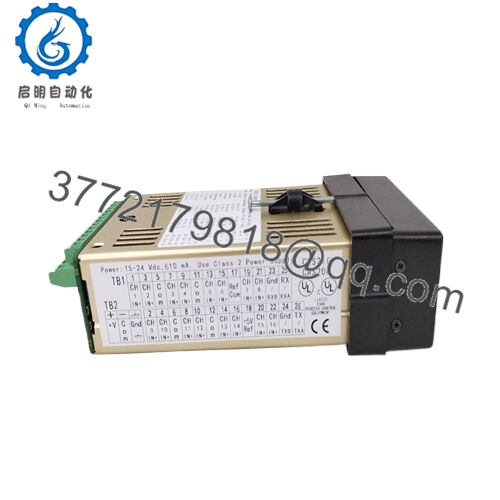
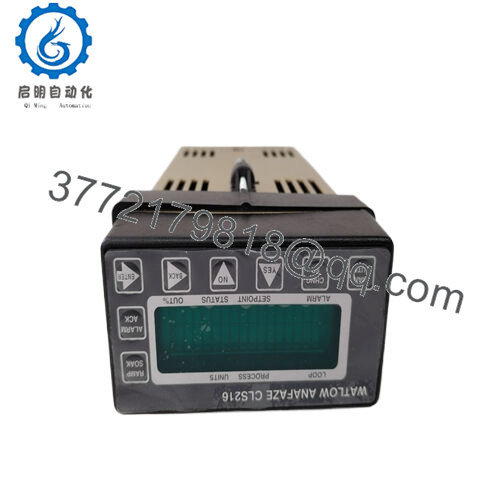
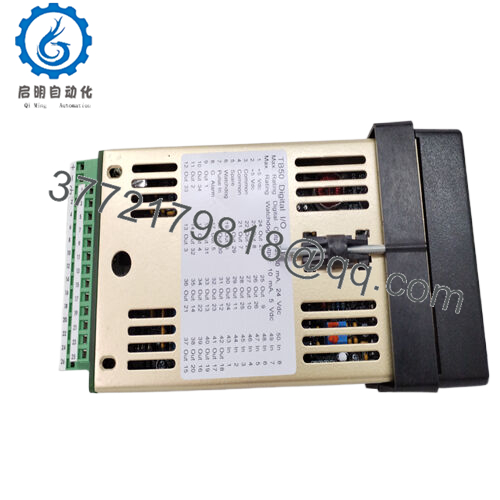
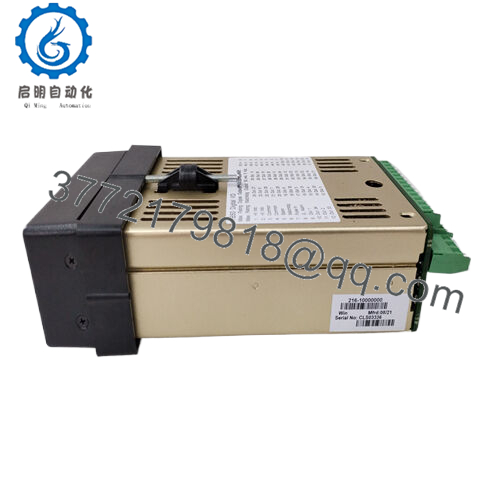
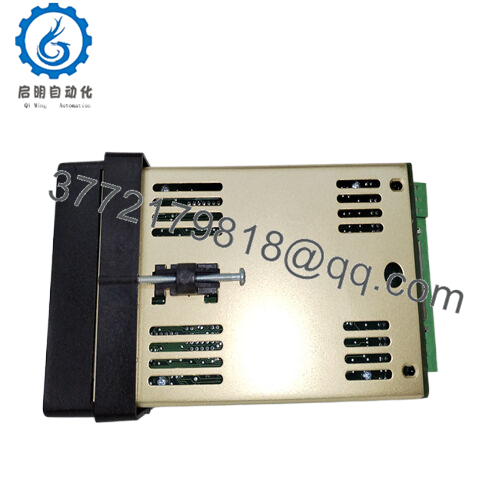
 WhatsApp: +86 16626708626
WhatsApp: +86 16626708626 Email:
Email:  Phone: +86 16626708626
Phone: +86 16626708626
